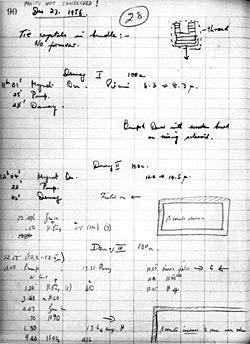
Page 90 of Ernest Ambler's laboratory notebook recording the historic parity conservation experiment on December 27, 1956.
The American Physical Society (APS) has designated the original campus of the National Institute of Standards and Technology (NIST) as a Physics Historic Site.
The APS designation recognizes a 1956 discovery that "revolutionized our understanding of nature's fundamental laws." The discovery was made in the low-temperature laboratory at NIST, then known as the National Bureau of Standards (NBS). The bureau moved to the current Gaithersburg, Md., headquarters site in the 1960s.
The 1956 experiment demonstrated that, in at least one fundamental physical process, the world is distinguishable from its mirror image. The experiment was performed by five scientists, four of whom worked at NBS, including a future NBS director, Ernest Ambler. The demonstration verified work by theorists from Columbia University and the Institute for Advanced Study, who won the 1957 Nobel Prize in physics.
APS officials presented a commemorative plaque to the University of the District of Columbia, now located on the old NBS campus, at a ceremony on November 9, 2011.
Read more about the APS designation.
The experiment is described online.

